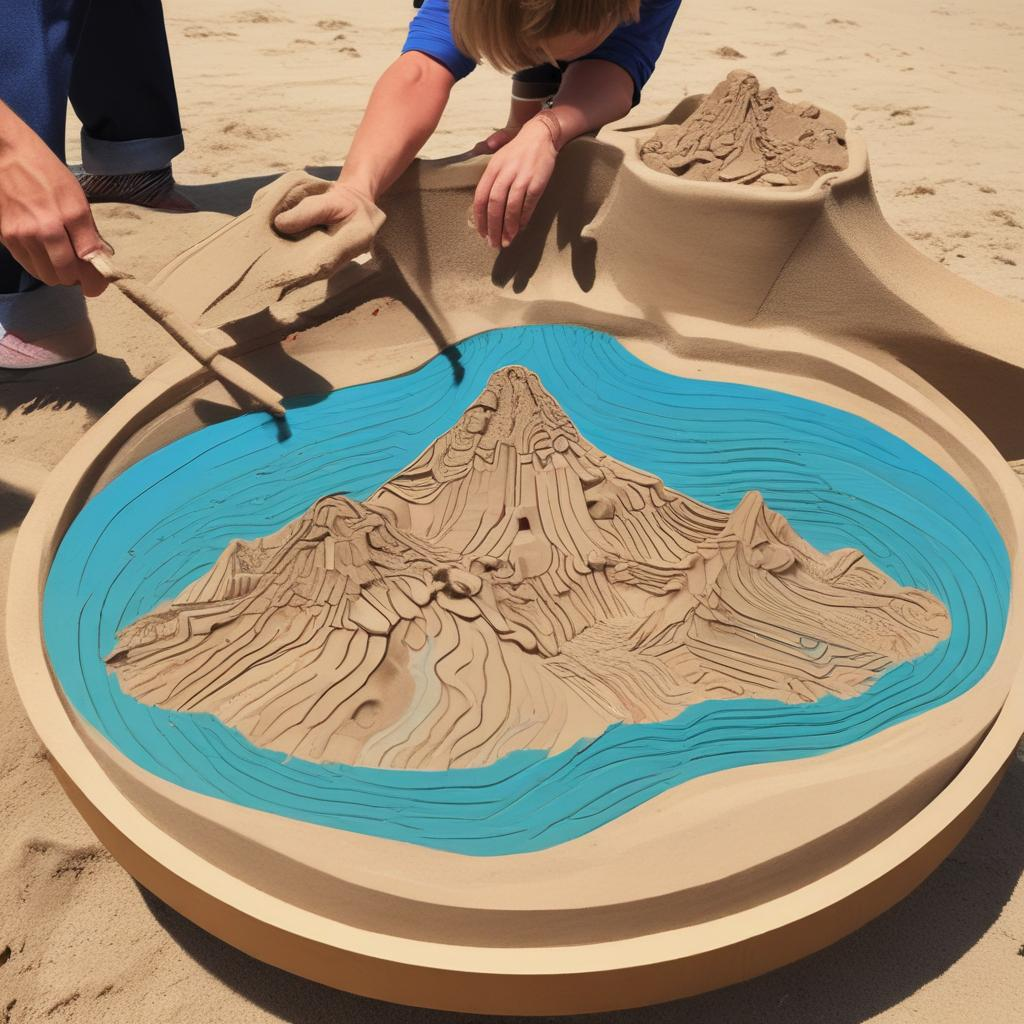Sand art, a form of expression that utilizes sand as a medium, has been mesmerizing audiences around the world for centuries. From intricate sand castles on the beach to elaborate patterns poured in glass containers, sand art is as ephemeral as it is beautiful. In recent years, innovative artists have pushed the boundaries of traditional sand art by incorporating modern technologies and concepts, creating stunning works that blend tradition with modernity. This article explores the top innovations in contemporary sand art.

1. Digital Sand Animation:
- One of the most groundbreaking innovations in sand art is the integration of digital technology. Artists like Kseniya Simonova, who gained fame on "Ukraine's Got Talent," use light tables and sand to create fluid, animated stories that are projected live. This digital aspect allows for real-time performances, making each showing unique.
2. Interactive Sand Installations:
- Interactive installations involve the audience directly, transforming viewers into participants. These installations often use sensors that detect movement or touch, altering the sand's form or color in response. This not only makes the art form more engaging but also emphasizes the concept of impermanence that is central to sand art.
3. Sand Printing:
- 3D printing technology has evolved to include sand as a printing medium. Artists and engineers use this technique to create complex shapes and structures that would be impossible to achieve by hand. This innovation not only opens new avenues in artistic expression but also has practical applications in architecture and design.
4. Sustainable Practice:
- Modern sand artists are increasingly focused on sustainability, using naturally colored sand and ensuring their practices do not harm the environment. This approach has inspired a new generation to think creatively about how art can coexist with ecological conservation.
5. Sand Animation Films:
- Unlike traditional sand art, which is predominantly live, some contemporary artists have begun producing films made entirely from sand animation. These films combine traditional storytelling with the transient nature of sand, providing a fresh medium through which narratives are conveyed.
6. Light and Shadow Experiments:
- The interplay of light and shadows plays a crucial role in sand art, with artists like Tim Bengel creating sand artworks that reveal themselves only under specific lighting conditions. This manipulation of light enhances the visual impact and adds a layer of mystery and anticipation to the viewing experience.
7. Augmented Reality Sand Art:
- Augmented reality (AR) brings an additional layer of interactivity and wonder to sand art. By pointing an AR-enabled device at the sand, viewers can see virtual elements and animations superimposed on the live sand art, creating a mesmerizing blend of real and virtual worlds.
8. Sand Sculpture Festivals:
- While not a new concept, sand sculpture festivals have incorporated modern themes and techniques, bringing together artists from around the globe to compete and showcase their skills. These festivals often feature massive, intricate sculptures and are a testament to the evolution of sand art as a competitive and collaborative art form.
9. Educational and Therapeutic Uses:
- Contemporary sand art has also found a place in education and therapy, where it is used to teach creativity and patience or as a form of art therapy to promote emotional healing. The tactile nature of sand makes it an excellent medium for engaging diverse groups, including children and those with disabilities.
10. Cross-disciplinary Collaborations:
- Today's sand artists often collaborate with professionals in other fields such as dance, music, and virtual reality, creating cross-disciplinary performances that highlight the versatility of sand as an artistic medium. These collaborations can lead to new forms of expression and help to introduce sand art to wider audiences.
In conclusion, the innovations in contemporary sand art are as diverse as they are inspiring. By blending traditional techniques with modern technology and ideas, artists have expanded the scope of what sand art can represent and how it can impact viewers. From digital animations to interactive installations and ecological practices, contemporary sand importance of creativity and adaptability in art continues to grow. These emerging trends not only redefine the boundaries of artistic expression but also promise an exciting future for the art form.


.jpg)
.png)
.png)


0 Comments